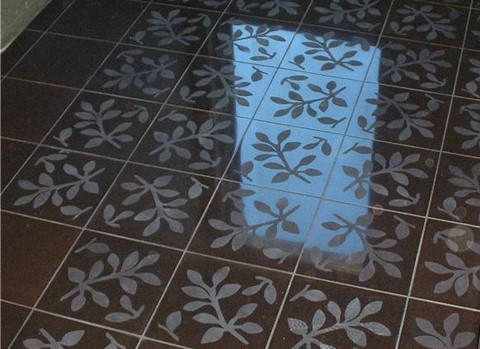Everyone at IntoCeramics started – and spent – much of our career in the traditional ceramic industry, making building products like ceramic tile, paving brick, and face brick.
All these industries consume large quantities of raw material to satisfy the world’s demand for construction products.
Brick and clay building products are, in fact, the single largest category of ceramic products made worldwide.
It’s easy to see why: clay or shale suitable for making these products is found darn near everywhere. Some clays fire red, some tan, some white, but they can all be used for brick to face your house.
And ages before we began hydraulically fracturing shale to extract hydrocarbons, we were using it to make bricks.
Side note: I once mined surface shale in Michigan to make red brick. It contained so much oil that it lowered our firing costs, providing free BTUs in the kiln as the shale oil burned off! (although the SO2 generated was another, more troublesome issue!)
Go to the Source
Most brick making operations were (and still are) located very close to the source of clay.
It is a whole lot easier and less expensive to build a kiln close to the clay than to haul tons of clay to an existing kiln elsewhere.
Transporting finished brick is also easier and more cost effective than hauling raw clay to a local manufacturing location closer to the customer.
Other ceramic product manufacturers have adopted the same approach.
Quite a few Italian and Chinese-owned firms have joined American ceramic tile manufacturers in Tennessee, where all that wonderful white burning ball clay is mined.
It’s great raw material and Tennessee is a fairly central location from which to distributed finished product – a win-win scenario.
But what if you have tailings from a mine or quarry that aren’t clay?
You can’t make ceramic building products from that, can you?
Making Ceramic Building Materials Without Clay
Actually, you can – and someone has patented the method for doing so.
The inventor of the Ceramext™ process, Ross Guenther, is a good friend and collaborator of IntoCeramics.
The Ceramext™ process is deceptively simple but allows the production of tile containing no clay or traditional ceramic materials.
In short, screened tailings are subjected to a high temperature and hot-pressed into shape followed by an annealing cooling to produce, well, stone!
This is, after all, how mother nature makes igneous rock – melted minerals in the form of magma or lava partially crystallizing upon cooling.
IntoCeramics has worked with Mr. Guenther on several projects, which have demonstrated the viability of his process using waste tailings from copper mines, gold mines, and granite quarries.
And just as the brick makers bring their factories to the clay pit, so too can the Ceramext™ factory be brought to the tailings pile.
Tile, brick, and even stone countertop production is possible.
Below we’ve included a brief description of the process and some of the products it can yield, and we encourage you to visit the website. It’s worth your time.
Repurposing Mine Wastes into Ceramic Products
Contributed by Ross Guenther, Owner, Ceramext, LLC
Ceramext has developed and patented hot-forging processes that transform waste materials into advanced impermeable high-strength ceramic compositions.
Until recently, mining companies were only interested in mining and not in producing ceramics from their mine tailings.
This is now changing, in part due to recent mine tailings facility failures, areas without suitable topography for continued tailing storage, and areas with high land costs.
Many patented Ceramext™ compositions are derived from waste materials, including mine tailings, quarry fines, reservoir sediments, biomass ash, and coal fly ash.
These waste materials, without using binders, can produce high quality floor, wall, and roof tiles, building cladding, bricks, pavers, counter tops, and other ceramic products suitable for marketing at competitive prices.
Porcelain quality tiles can be produced efficiently by only screening raw waste materials, eliminating expensive grinding and spray drying steps.
Ceramext has also developed a patented process to form mine wastes into large rectangular and cylindrical shapes. These are particularly suitable for the economical storage of radioactive waste.
The same methods could be used to create building materials from regolith on the moon and Mars.
A Ceramext composition patent containing anhydrite is similar, if not the same, as the composition being used by NASA rovers to detect sulfur on Mars.
To learn more, please contact Ceramext at www.ceramext.com



